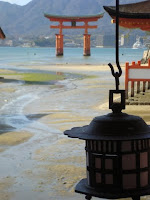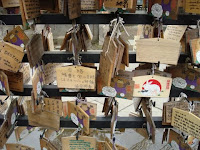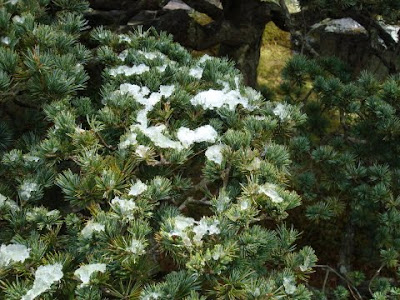
Standing exiled on the outside of institutional religion, sometimes we’ve looked in with longing. Sometimes we’ve set our faces firmly away and trekked into the desert, knowing that the way forward isn’t the road back. If sometimes we’ve reinvented our spiritual lives in ongoing struggle with traditions that have oppressed us, at other times the life-saving choice has been just to walk away, however empty the landscape in front of us has seemed. We’ve decided–or had the decision thrust upon us–to seek out the wellsprings that nourish our inner lives from the bottom up, rather than waiting for sustenance to drop from above.
Along our paths through the wilderness, we’ve turned aside to see wonders we can’t always explain or understand: the stone by the edge of a lake where we’ve dried ourselves with friends in the summer sun after a swim; the bathhouse cubicle where we experienced the exquisite kindness of a stranger whom we’ll probably never see again; the bed in which we cradled a dying lover; the garden pond he built in his last year of good health; the estuary swarmed by dozens of men trekking from the beach at afternoon high tide.
We need to give these experiences their due, to listen carefully for their wisdom, without forcing them to conform with a top-down theology that has already weighed on us so heavily.
We need ways to honor these unobtrusive times and places, where we glimpse–what? The Divine? God? A less absolute but clear inner truth? A signpost to a destination we still can’t grasp? We need ways to mark them without making either too much or too little of them. The absolute claims of the monotheistic religions may not help us much here. We need space where the small glimpses of a deeper reality can simply remain what they are for the time being, without being drawn prematurely into a Big Picture.
We need the lesser gods, and means to revere them.
Perhaps we need to draw on the resources of Shinto–a tradition of practice virtually without abstract theology, untroubled by any compulsion to reduce the variety of transcendent experience into an orderly system. We need simple means to set apart places, objects, and experiences as sites of mindfulness and of continued, focused reflection.
Lanterns to mark a path toward the place of encounter with what lies beyond.
A ceremonial vermillion gate, the torii, to divide the ordinary from the extraordinary.
A basin of water, and a ladle for purifying one’s hands and mouth.

A rope, the shimenawa, to cordon off and declare holy a tree; a well; a bed of moss; an empty space that holds nothing visible at all, but only the memory of what has come to pass there.
Strips of paper folded in a zigzag pattern, the shide that hang from the rope and strengthen the intention of reverence it represents.

A rack on which to hang votive tablets bearing the prayers of the devout. And that’s all. What it means comes later. This isn’t the time or the place for answers. It’s the time and the place for Meeting.

